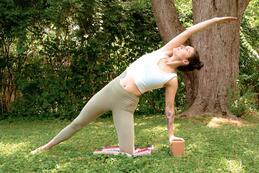
How does laughter do this? What are some of the mental and physical health benefits of laughter? How can laughter invigorate, as well as relax, our athletes and clients and ourselves? Here are just some of the benefits I have learned:
-Laughter and shared laughter is contagious, which contributes to our overall sense of well being, and our bodies want as much of this feeling as possible.
-Laughter reduces the stress response because when we laugh our muscles contract, which increases blood flow and oxygenation, which then stimulates the heart and lungs, triggering the release of endorphins, helping us feel more relaxed and loose both physically and emotionally.
-Laughter increases resilience, our ability to see failure as a natural progression to success rather than as a negative outcome; those who are resilient are happier and more successful; our ability to acknowledge mistakes without becoming angry or frustrated plays an important role in developing resilience, and laughing at mistakes allows us to recognize that making errors is a part of being human.
-Laughter combats depression and is a great way to get outside the downward spiral to depression. By being a ‘witness’ to our situation rather than allowing ourselves to feel victimized or defeated, we can find the humor in it and see with fresh eyes. Even forced laughter releases a mixture of hormones, neuropeptides, and dopamine that can start to improve our mood.
-Laughter relieves pain because when we are laughing we are less bothered by the pain we are experiencing. The pain levels don’t change, the amount of pain can remain the same, but our perceived pain levels reduce and our belief that we can cope increases. Laughter by itself isn’t the solution or prevention to injury of course, but it can help us overcome physical and emotional discomfort.
-“Laughter boosts immunity and may increase natural killer cell levels -a type of white blood cell that attacks cancer cells,” according to research from Indiana State University- School of Nursing.
-“Laughter activates the body‘s natural relaxation response. It’s like internal jogging, providing a good massage to all internal organs while also toning abdominal muscles,” says Dr. Gulshan Sethi, Head of Cardiothoracic Surgery at the Tucson Medical Center.
However you enjoy encouraging laughter in warm-ups and cool downs, training sessions, or in daily life activities, the benefits are priceless. Have a laugh - or 100 laughs a day, and allow discomfort, confusion, and frustration to simply melt away. After all, life is supposed to be FUN!
….and that’s MY 2 SENSE!
Charis


 RSS Feed
RSS Feed
